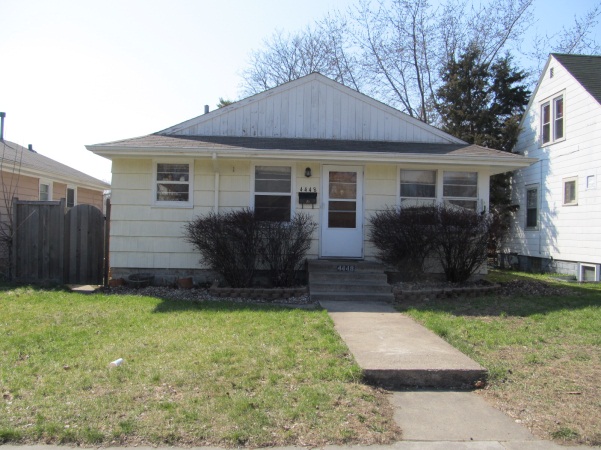About
View the design guidelines of this historic district

1954 |

3943 5th Avenue South, 2016 |

4000 Block 5th Avenue South, 2015 |
Boundaries: 28 parcels located along Fourth Avenue South and Fifth Avenue South between 39th Street East and 47th Street East
Neighborhood: Bryant, Field, Regina
Construction Date: 1954-1957
Contractor: Tilsenbilt Homes, Inc.
Architect: Norman R. Johnson
Architectural Style: Vernacular Ranch
Historic Use: Residences
Current Use: Residences
Date of Local Designation: 2017
Date of National Register Designation: N/A
Area(s) of Significance: Social History; Significant Persons
Period of Significance: 1954-1957
Historic Profile: The Tilsenbilt Homes Historic District consists of 28 modest single-family homes that were constructed as part of the first privately developed interracial housing project in Minneapolis, and one of the first housing projects in the country to offer FHA-insured mortgages to buyers of all races. The district is significant for its association with housing segregation and Minneapolis’ Civil Rights history, as well as its association with realtor Archie Givens, Sr. and builder Edward Tilsen.
During the 1930s and 40s, housing discrimination in the United States became more prevalent, as organizations like the FHA and VA codified and encouraged discriminatory practices including racial covenants and redlining. Realtors’ associations, banks, and local governments also contributed to housing segregation. In Minneapolis, African Americans were particularly affected. In the 1940s and 50s, the black populations of many northern cities, including Minneapolis, grew rapidly as African Americans left southern states for the booming wartime and post-war economies of America’s industrial cities. Unfortunately, African Americans arriving in Minneapolis found a largely segregated city with few housing options available to them. African Americans were largely restricted to just a few neighborhoods in Minneapolis, creating a severe shortage of quality housing for black Minneapolitans. Perhaps the most telling statistic is that out of over 9,500 single-family homes and duplexes built in Minneapolis between 1946 and 1952, fewer than 20 were sold to African-American buyers.
In 1953, following the success of several early integrated housing projects in other parts of the country, the FHA and the Minneapolis Urban League met with several African American realtors in an attempt to encourage a pilot interracial home-building project in Minneapolis. Realtor Archie Givens committed himself to the project, identifying a location for the project, recruiting builder Edward Tilsen, and helping to secure financing. Givens identified a collection of scattered lots owned by Mike Kelley, former owner of the Minneapolis Millers. At the time, East 42nd Street was generally the southern boundary of the large black community centered on the intersection of Fourth Avenue South and East 38th Street. While the area located north of East 42nd Street had one of the highest black populations in the city, the area to the south, where many of the lots were located, was nearly all white. Tilsenbilt Homes, Inc constructed a total of 52 homes as part of the project, approximately 90 percent of which were sold to African-American or mixed-race buyers.
Archie Givens, Sr. was born in Minneapolis in 1919. He is significant for the role that he played in some of the earliest integrated housing projects in Minnesota, as well as his prominence as a developer and philanthropist. In addition to his work with Mr. Tilsen, Givens built the first integrated nursing home in Minnesota, the Angelus Home at 4238 Third Avenue South. Givens developed three other nursing homes in addition to affordable apartments. In 1972, Mr. Givens and his wife started the Archie and Phebe Mae Givens Foundation, which today maintains the Archie Givens Sr. Collection of African American Literature in partnership with the University of Minnesota and helps promote black literature and culture.
Edward Tilsen was born in Ukraine in 1891 and came to the United States in 1906, living in Wisconsin, North Dakota, and Michigan before settling in Saint Paul in 1932. He is significant for the role that he played in developing interracial housing projects. Prior to developing the homes of this district, in 1947, Tilsen developed the first known interracial commercial housing project in the entire country, a series of rowhouses at 990-1036 Carroll Avenue in Saint Paul. Tilsenbilt Homes has been passed down through four generations of the Tilsen family and continues to build homes in Minnesota.
Photo Credits:
1954, Minnesota Spokesman-Recorder
2015 and 2016, CPED Staff
Works Cited:
“Tilsenbilt Homes Historic District Designation Study,” 2017.
Updated: February 2017

